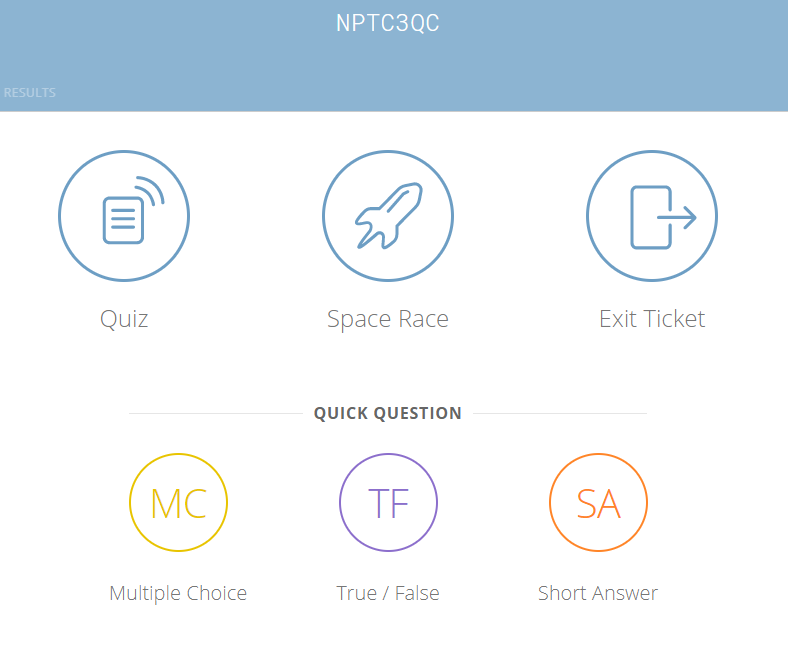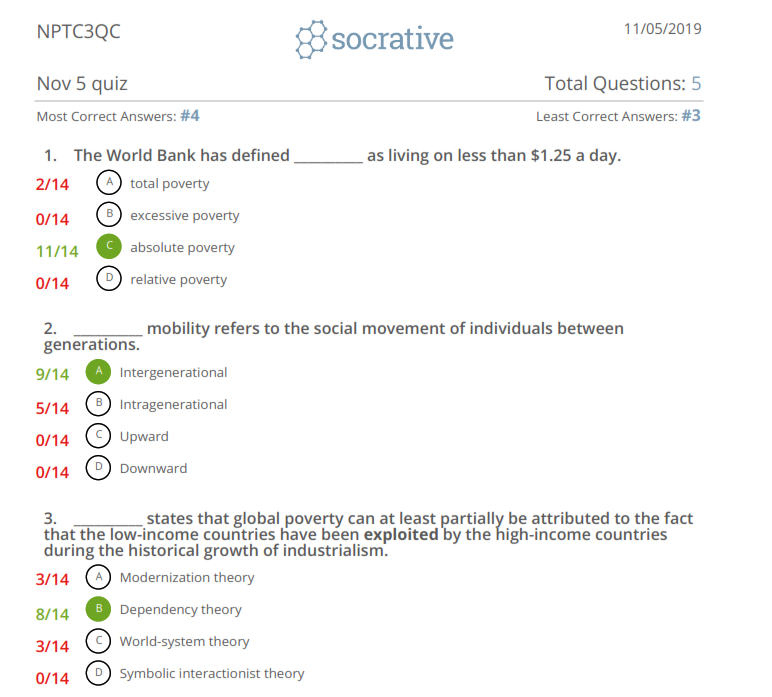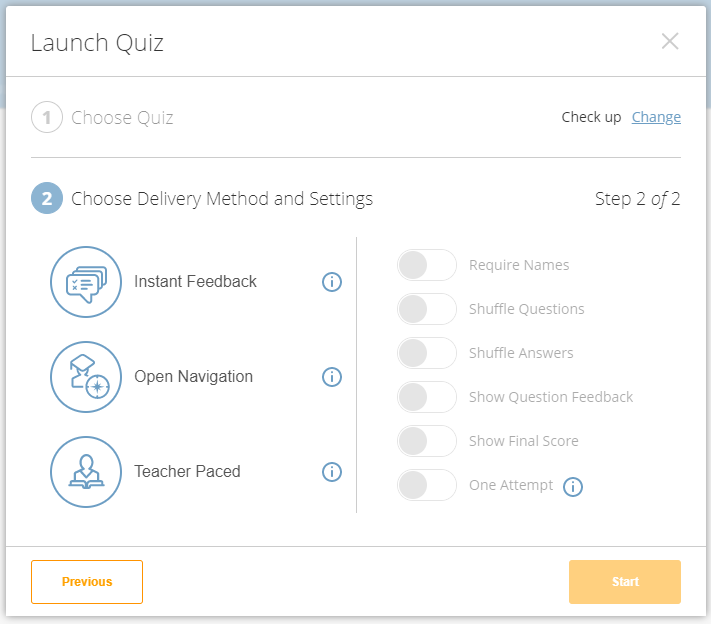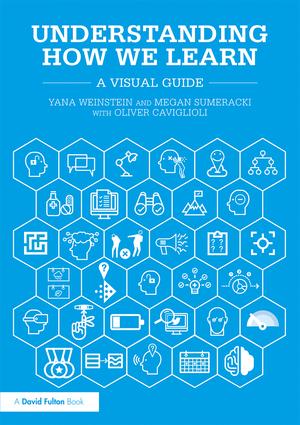This post is a two-fer. It is part book review and part tech tool. At this point, we all have to contend with the fact that our students do not use effective studying / learning strategies. More than that, they may use strategies that are detrimental to their learning. There is ample research demonstrating this.
So, what are the more effective, research-supported strategies for deeper learning and how can technology tools support those? This post is a modest attempt at tackling this conundrum.
I have just finished reading the book above, Understanding How We learn – A Visual Guide. If you click on the image, it will take you to the COD Library call number for the book since we have it here. Otherwise, you can find it at the publisher’s website.
If you haven’t really acquainted yourself yet with the scholarship of teaching and learning, and the latest research developments on the subject, this book is a good introduction to that. A big chunk of the book is a review of the research on the subject of perception, attention, and memory, as a way to push back on the myths and misunderstandings that still circulate about learning, especially among our students.
Based on that review, the book then goes into specific strategies for effective learning. If you are familiar with other books such as Making It Stick (also a great book, also in our Library at the link) or Small Teaching (one of my favorites, also in our Library at the link), nothing presented in this book is entirely new but there are still details and examples worthy of interest.
So, what are the strategies for effective learning?
- Planning
- Spaced practice: spreading study activities over time as opposed to cramming (which is bad)
- interleaving: switching between topics while studying as opposed to mass practice.
- Development of understanding
- Elaboration: asking how and why questions about the topic under review
- Concrete examples, especially to illustrate abstract concepts
- Dual coding, combining visual and textual or spoken elements, while avoiding cognitive overload
- Reinforcement
- Retrieval practice that brings learned information to mind from long-term memory.
There is obviously no single good ways to implement those strategies. What we do depends on our respective fields, the level of the class (1000-level v. 2000-level), and the amount of time we have. These strategies can be implemented in class or set up so the students can use them on their own time.
While the set of chapters on strategies deals with the research and its results, the last section of the book includes three chapters: tips for teachers, tips for students, and tips for parents (the book is not specifically about higher education but is entirely relevant to it). If, after reading about the strategies, you are not sure where to start, the tips might be useful.
So, again, if you are kinda new to this, this is a good introduction, and the visual aspect (props to the authors for taking their own advice and using dual coding) makes the reading less dry. However, I don’t know who picked the color palette, but holy lack of contrast, that was a bad choice. Some of the font is super small and very light blue, and if you are like me and your eyesight ain’t what it used to be, there will be a few unhappy reading moments. Ally would totally flag that stuff!
And for the record: my beloved mind maps are mentioned many times in all three categories, but especially as a powerful retrieval practice, be they scaffolded (as when I provide students with a starting point for a map) or started from scratch, asking students to map everything they know on a topic they have studied.
I use multiple tools in my implementation of these strategies (although I make no claim to expertise), but in this post, I want to discuss the use of Socrative, an instant response system. Some of you may be familiar with others such systems as Kahoot! or Poll Everywhere.
Why do I use Socrative over these alternatives? Kahoot! looks way too childish to me. There is such a thing as too much gamification, in my not-so-humble opinion. And while Socrative has fewer options than Poll Everywhere in terms of the types of questions available, the free version has a higher student cap, and, I think, a cleaner interface. As I mentioned, the free version is sufficient for most use, but Socrative’s paid version is much cheaper than Poll Everywhere’s. I used my professional development fund to get the pro version (they were offering 2 years for the price of one).
So, what can you do with the free version? First, Socrative works on the web and has a mobile app that both students and instructors can use. Typically, I have my students use the app from their smartphones. It is free for them as well. It does not require them to enter any private information (rant: with all the talk of data and more data, at some point, we’re going to have to talk about student privacy).
From the instructor’s perspective, things look like this after login:
a set of options depending on what you are trying to do:

Launch will launch an existing quiz. Quizzes is the area where you would design and create quizzes. Rooms is basically where the students would login to complete an activity. In the free version, you only get one room with a max of 100 students. Reports is where you would find the reporting options once an activity is completed. And results shows, well, the results of an activity.
Also on that main page is this:

The combination letters and numbers at the top is your room number. The students will use that login. That is all they need. Then, you can choose several option: a standard quiz, with the same choices as the quick questions: multiple choice, true / false, short answer.
A space race is great if you want to introduce a little friendly competition among your students. In a space race, you can create as many teams as you want. Students will be assigned to a spaceship of a given color, either randomly, or through self-selection, and then, you release the quiz and see who wins.
An exit ticket is useful if you want to check how a session went or if you want to ask questions before your students leave class. This is akin to the one-minute polling kind of activity.
I also like Socrative’s reporting capability: you can get the results of your activities as pdf or excel sheets, in different formats, for by question or by student. For instance, you can get a quick overview of an entire class quiz like this:

This was a quiz with 5 questions I asked at the end of the class. In green were those who answered correctly, and in red, those who answered incorrectly.
You can also see answers by questions:

So what does Socrative have to do with effective learning strategies and how do I use it?
The research is pretty unequivocal on the effectiveness of frequent, low-stake, quizzing. That is a first easy way in which Socrative can prove useful. You can integrate short but frequent quizzes at the beginning or the end of class. In addition, it is easy to set up spaced and interleaving practice by setting up quizzes on multiple topics, that cover not only current topics in the class, but also bringing back previous topics. In addition, quizzes can be part of retrieval practice where students can check their understanding of topics. If done in class, then, quizzes can be set up so that the instructor can identify right away where there are issues and give immediate feedback when some part of the content is problematic.
It is easy to set up in Socrative. When you launch a quiz, the app gives you several options:

Instant feedback does just that: students answer the question once and cannot change their answer. They receive immediate feedback before moving on to the next question.
Open navigation lets them go back and forth and change their answers before finishing.
Teacher Paced lets the teacher control the flow of the questions, review the results, and give feedback as needed.
In all three options, you monitor what goes on in the quiz, and see the results are students answer the questions.
If you don’t want to use class time for quizzing, you can still launch a quiz and leave it open as long as you want so students can answer the questions on their own. In this case, avoid the teacher paced option. The other thing is that, under the free version, you only have one room, so, as long as an activity is ongoing, your room can’t be used for any other activity.
You can even hit the dual coding aspect as Socrative allows you to integrate images into quizzes. You may think that only three types of questions (M/C, T/F, short answer) is not enough (and yes, Poll Everywhere has more), but this gets you to really think about the types of question you want to ask. For the record, from the book above, the type of questions has a limited effect on the results students get. Frequent, low-stake quizzing gets results irrespective of the type of question.
I also use Socrative during class to work on the elaboration and concrete example strategies, either individually, or in groups (sometimes in combination where students brainstorm in group but answer the questions individually) to explore either concrete ways that concepts apply, or to take some content further. This allows me to also to break the potential monotony of class by changing modalities during class periods.
Finally, I also use Socrative’s exit tickets options to check on how students are doing in the class, if they think they have a good understanding of why we are covering the topics in the order in which we do, if they understand the type of work they have to do, and if there is anything they need me to know or any help they would like me to provide (within reason, so far, though, no one has asked for anything weird).
If you would like me to create a video on Socrative, just ask.
As always, thank you for reading.
Christine




